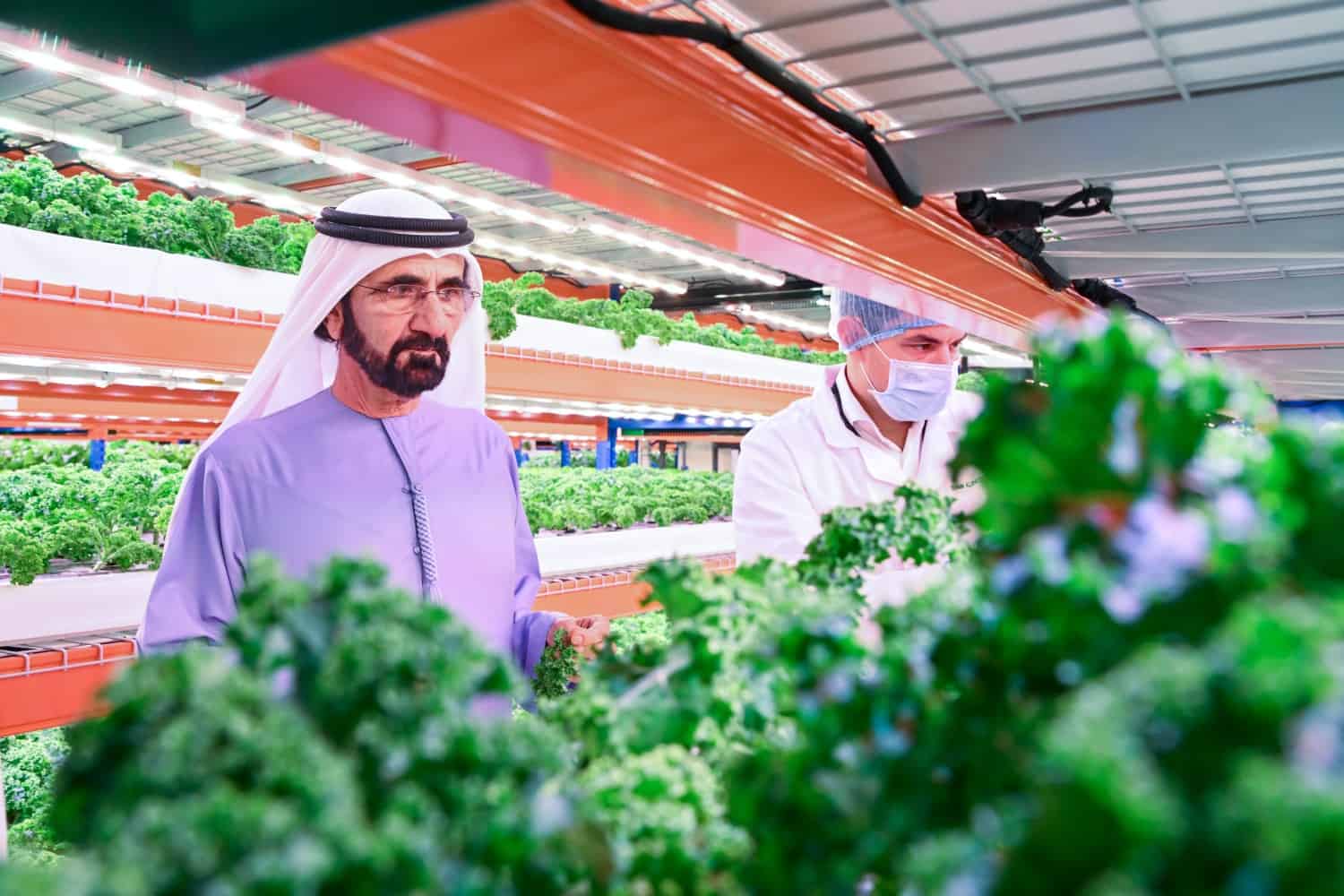The Middle Eastern countries need to adopt the latest agricultural technologies (agritech) to make their farming sustainable, and to overcome their food supply and security challenges. The near-term challenge for many Middle East countries is that they are import dependent, buying more food than they export. That makes them vulnerable to supply chain disruptions. For example, in 2019 before the COVID-19 pandemic, Saudi Arabia imported $10.5 billion of key agri-food products and exported just $1.7 billion—a deficit of $8.8 billion. Introducing agritech can cut such deficits, make food supplies more reliable, and stimulate innovation.
The region’s agriculture also suffers from a variety of economic and policy problems. There is a lack of agricultural labor. The sector’s capabilities are underdeveloped, yields are low, soil salinity is an issue, and there are shortages of arable land, feed resources, and water. Although many of these challenges are longstanding, the COVID-19 pandemic has exacerbated them. Recent supply disruptions, some caused by geopolitical instability, are reminders of the region’s food insecurity. Globally, the stress on supply chains has made countries more conscious of the need to source food locally, focus on food security, and reduce reliance on a few food processing plants.
To overcome these challenges, Middle East countries need to develop agritech and promote the latest advances. Agritech provides a range of options with substantially higher yields that use fewer resources, including labor, water, and land than traditional farming–which means fewer emissions. There are six main forms of agritech that can work in the Middle East:
- Controlled environment agriculture subjects plants to a controlled proportion of light, temperature, humidity, and nutrients. It uses different growing environments such as indoor farming, vertical farming, and greenhouses. Increasingly, controlled environment agriculture uses hydroponics and aeroponics which involve growing soilless plants in a liquid nutrient medium or steam. Another such technique is aquaponics, which cultivates plants and fish simultaneously
- Precision agriculture uses data and technology to ensure that crops and soil receive exactly what they need for maximum health and productivity. That can involve temperature and moisture sensors, aerial images, GPS technology, and artificial intelligence. Predictive analytics provide farmers with real-time data that inform crop rotation, the most auspicious planting times, the best harvesting times, and soil management.
- Agricultural robotics can assist farmers with automating numerous farm operations, including fruit-picking, harvesting, planting, transplanting, spraying, seeding, and weeding.
- Desert farming solutions increase water retention capabilities in the soil, and develop alternative solutions for conventional irrigation, thereby increasing yields.
- Seawater farming avoids the Middle East’s lack of freshwater by using abundant saltwater to support sustainable agricultural activities and enrich soils in coastal regions.
- Cellular agriculture produces proteins, fats, and tissues by using cell cultures thereby avoiding emissions intensive traditional agriculture. Most cellular agriculture focuses on animal products such as meat, milk, and eggs.
To take advantage of agritech, Middle East countries need to invest to bring down costs so that these technologies are financially attractive at scale. At present, the production costs of agritech remain considerably higher than those of traditional farming, which discourages adoption.
Governments in particular have an important role to play beyond their usual mixture of regulation and facilitation. There are five measures Middle East governments can take to push the use of agritech in the region.
First, governments and farmers can agree partnerships with leading technology suppliers. Countries should not move from importing food to growing food domestically based on imported technology, as that simply shifts the trade deficit from agriculture to capital goods. Instead, governments and farmers can seek arrangements to manufacture some agritech in the Middle East and ensure that it is adapted to the regional environment.
Second, governments can offer financial incentives, regulatory flexibility, and commercialization support for agritech. For example, the government can identify and facilitate partnerships between agritech firms and food distributors as a means of supporting the sale and distribution of agritech produce.
Third, governments can improve collaboration between the research community and businesses so that agritech meets the needs of the Middle East market and environment. Governments could sponsor research and development (R&D) consortia that connect them with businesses and academia.
Fourth, governments can help to attract skilled labor and talent by providing high-quality job opportunities and incentive packages. Such talent is particularly important for R&D efforts.
Fifth, governments can establish state-of-the art research, prototyping and testing facilities to provide space for students, startups, and businesses to innovate. The Netherlands, for example, hosts the World Horti Center which focuses on greenhouse agriculture.
Middle East countries can ease their near-term food security and promote innovation by actively supporting agritech. Better, by adopting agritech Middle East countries can make their agricultural sectors more efficient and more sustainable.
Makram Debbas is a principal with Strategy& Middle East, part of the PwC network. The co-authors Roger Rabbat and Salim Ghazaly are partners, while Aya Hallak is a principal at the firm.
The opinions expressed are those of the authors and may not reflect the editorial policy or an official position held by TRENDS.







